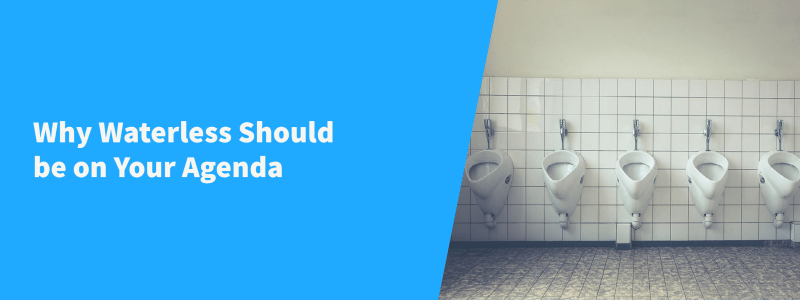You may be wondering what World Toilet Day is all about, and why you should be interested. Well it’s quite an important day, and one that is growing in popularity because it is shining a light on some of the issues surrounding safe and acceptable hygiene conditions. For further information you can visit the World Toilet Day website here. One thing they are encouraging is the uptake of waterless toilets.
World Toilet Day is also a good chance to take a look at your own washroom situation, and whether there is a way you can do a little better in your bathroom. Workspaces often waste a lot of water and a lot of bathroom products and with the world becoming more eco-conscious, it is something worth thinking about.
So, what could be the best thing you do this World Toilet Day? Reduce water consumption, that’s what!
Why you should reduce water
Reducing water will almost certainly reduce costs. Cutting down on the amount of water you use can reduce the cost by 50%, especially when using water-reducing technologies. There are particular newer items that can be used to lessen the amount of water used. These include installing urinal flush control, which can reduce water consumption by 70%. You can also buy urinal sleeves that reduce cost and blockages. Sounds like it could be for you? Learn more here. Below are some more water facts that may convince you that a waterless toilet is the way to go.
Water reduction facts:
- Every day 3 billion litres of water is wasted in the UK alone.
- A latest survey of 2000 Brits states that water wastage is low down in their environmental concerns.
- Toilets typically use 7.5 litres of water per flush, so if you multiply that by the amount of toilets you have in your workplace, and the times they’re used, that’s a lot of water used that could be reduced!
How to reduce water in your business
Reducing water in your business is good for the environment but also good for your wallet. In the UK and across the globe, businesses and households are going to need to reduce their water consumption, not just for eco reasons, but for supply reasons. Water levels have started to drop significantly and as populations grow, we will all need to live with less. Here’s how your business can:
- Install taps that automatically turn off after a number of seconds. This saves water on both over-using and accidentally leaving the tap on.
- Installing a toilet flush control can help save up to 3 litres of water per flush without compromising on hygiene.
- Remind staff that while cleaning dishes manually or by machine, they should only use the water they need and stock the machine up full before use. Multiple washes mean wasted water.
- Keep an eye on appliances and pipework for leaks. A leak that isn’t tended to can end up costing hundreds of pounds in wasted water. Have your staff keep their beady eyes out.

